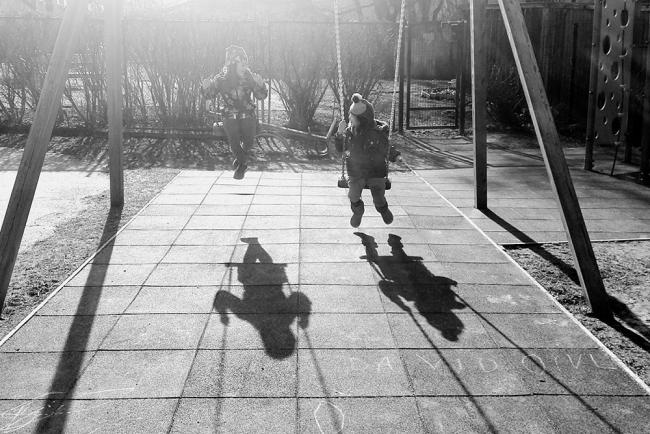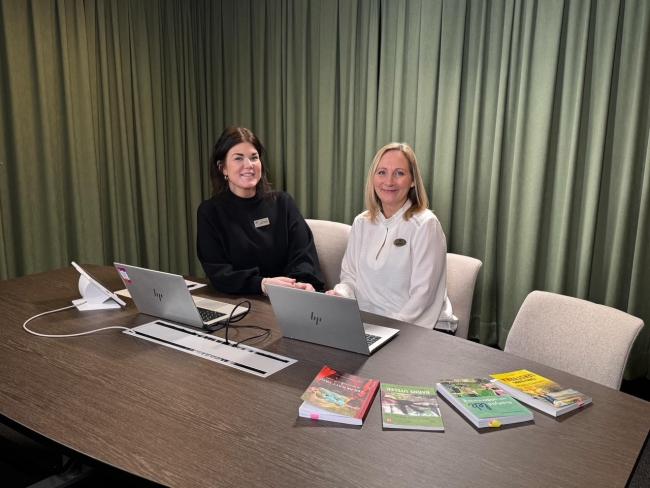Children are equipped through adventurous play
2025-04-04For a child, an ordinary morning at preschool can be an adventure. It can involve learning to jump from a rock, slide down a slide, or ride a tricycle. But what exactly is adventurous play, and how much do we allow our children to use their imagination in play even if it involves a risk of possibly getting hurt? The new course "Adventurous Play in Preschool" at Karlstad University clarifies the concepts.
In recent years, the concept of risky play has become relevant in societal debate. Research shows that this form of play contributes to children gaining important experiences and knowledge that they carry into adulthood to handle various situations.
The purpose of the new course, which was available for application for the first time last year, is to develop a reflective pedagogy around children's play in preschool. In the course, students explore how adventurous play can be enabled both indoors and outdoors by allowing the play to be dynamic, joyful, and risky from a holistic perspective. They also explore how different learning tools can add value to adventurous play.
"There is also an international perspective in the course. This has been discovered, among other things, through our Erasmus exchanges within preschool teacher education with Scotland and Australia, where they have also started to reflect on risky play. In Norway, risky play (farlig leg) has now been introduced in the preschool curriculum," says Karolina Kjellberg, lecturer in educational work and course coordinator.
Exciting games provide motor and psychological skills
The course "Adventurous Play in Preschool" is offered for the first time in spring 2025 and had over a hundred first-choice applicants, which shows that it addresses a topic that engages professionals in preschool. But what are the benefits of adventurous and risky play? Is it good for children to engage in adventurous and risky games? The answer, according to research, is that children need to try and test their abilities as it is fundamental to their development.
"For a long time, adults' safety thinking has contributed to children today not being able to test their limits in play in the same way as before," says Janni Karlsson, lecturer in educational work and course coordinator. In the past, it was more natural for children to have room for action and freedom of movement in play without adult presence. Today, we have a different safety thinking where we adults consciously protect children from getting hurt. We can ask ourselves why we need a concept like risky play today to describe children's exploration and risk-taking in play? According to researchers, the goal of risky play is not to turn cautious children into thrill-seekers, but the goal is to let children take stepwise risks at their own pace. Research also shows that children who get to play and explore through exciting games like climbing trees and playing at heights gain various motor and psychological skills. It involves, among other things, mastery, self-control, motor skills, muscle strength. Play from heights contributes to skills such as perceiving depth, shape, size, movement, and spatial awareness.
Research also shows that children who have engaged in risky play as young gain various advantages as adults. It involves abilities such as being able to handle risks at work, in private life, and in society and daring to trust that things will go well.
"All preschool educators need to make a risk assessment of what is appropriate to let the children do," says Karolina Kjellberg. It is also important to have a common view within the teaching team at the preschool. The purpose is not to advocate either one or the other, but to contribute to an opportunity for adults to reflect on their own approach and how they can contribute to giving children more room for action in play.
To get inspiration for the course and to find out what is interesting to get professional development about in preschool, the course leaders have asked professionals and former colleagues if this course content would be interesting, which several responded positively to.
A major advantage of the course, the course leaders believe, is that the course is digital and as a professional, you can take part in the course content when it suits your everyday life. The course content also varies with traditional lectures, recorded conversations with teachers and researchers, and podcasts that can be listened to during, for example, a walk. The course also includes students making their own observations in preschool's various play environments.
"We have posted about the course on Instagram and the account digitalpedagog, as well as our private social media and received very positive responses," says Janni Karlsson. We hope that more choose to apply for the course in the current application period.
The course "Adventurous Play in Preschool," 7.5 credits, is completely digital and consists of recorded podcasts, recorded lectures, about 20 minutes long, which means you can take part in the course whenever and wherever you want.
The course can be applied for as a standalone course by professionals in preschool and students.
The course is also offered to preschool educators within the framework of commissioned education at Karlstad University, https://www.kau.se/karlstads-universitets-uppdrags-ab/uppdragsutbildningar/undervisning-skolutveckling/kurser-36




